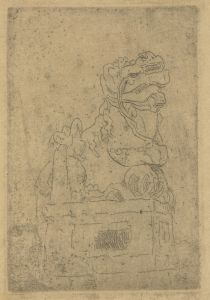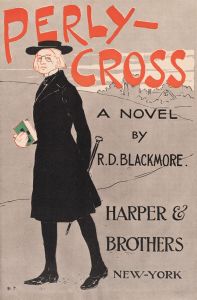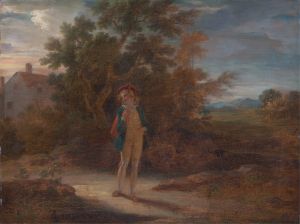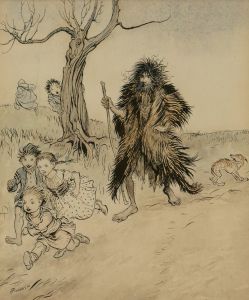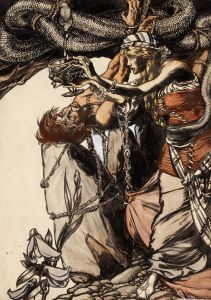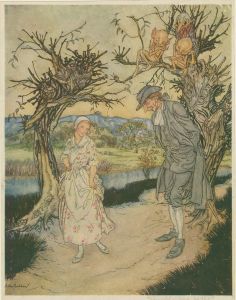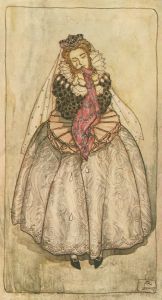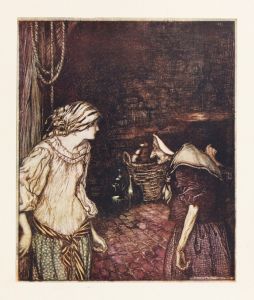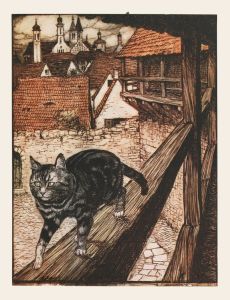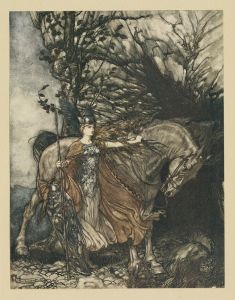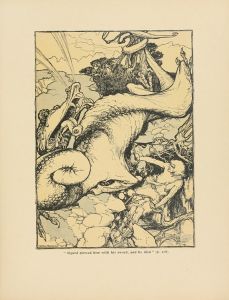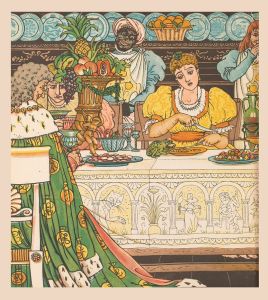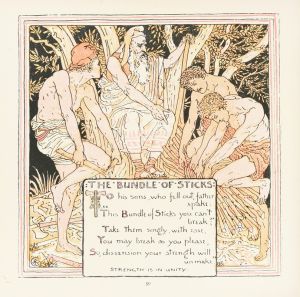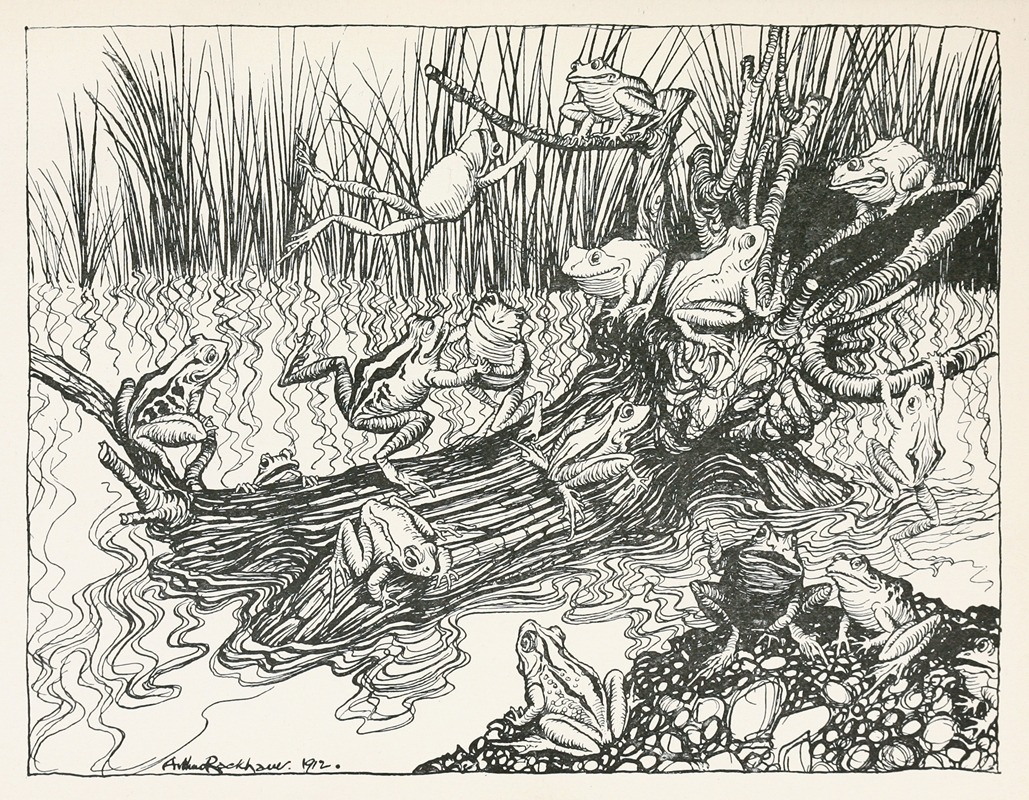
King Log
A hand-painted replica of Arthur Rackham’s masterpiece King Log, meticulously crafted by professional artists to capture the true essence of the original. Each piece is created with museum-quality canvas and rare mineral pigments, carefully painted by experienced artists with delicate brushstrokes and rich, layered colors to perfectly recreate the texture of the original artwork. Unlike machine-printed reproductions, this hand-painted version brings the painting to life, infused with the artist’s emotions and skill in every stroke. Whether for personal collection or home decoration, it instantly elevates the artistic atmosphere of any space.
"King Log" is an illustration by the renowned British artist Arthur Rackham, known for his distinctive style and contributions to the Golden Age of British book illustration. Rackham, born on September 19, 1867, in London, became one of the most celebrated illustrators of his time, particularly noted for his work in children's literature and fairy tales.
Arthur Rackham's illustrations are characterized by their intricate detail, rich color palettes, and a blend of whimsy and darkness. His work often features fantastical creatures, ethereal landscapes, and a unique ability to bring stories to life through visual art. Rackham's illustrations have graced the pages of many classic books, including "Alice's Adventures in Wonderland," "Peter Pan in Kensington Gardens," and "The Wind in the Willows."
"King Log" is one of Rackham's lesser-known works, and it is associated with his illustrations for Aesop's Fables. Aesop's Fables are a collection of stories credited to Aesop, a storyteller believed to have lived in ancient Greece. These fables typically feature animals as characters and convey moral lessons. Rackham's illustrations for Aesop's Fables were published in 1912, and they are celebrated for their ability to capture the essence of these timeless stories.
In "King Log," Rackham illustrates the fable of "The Frogs Who Desired a King." The story tells of a group of frogs who, dissatisfied with their freedom and lack of governance, petition the god Zeus for a king. Zeus, amused by their request, sends them a log as a king. Initially, the frogs are excited, but they soon realize that the log is an ineffective ruler, doing nothing to govern or protect them. Disappointed, the frogs ask Zeus for a more active king, and he sends them a stork, which begins to eat them. The moral of the story is a cautionary tale about the dangers of desiring change without considering the consequences.
Rackham's illustration of "King Log" captures the humor and irony of the fable. His depiction of the frogs and the log is both whimsical and thought-provoking, reflecting the fable's underlying message. The artwork showcases Rackham's skill in using line and color to create a vivid and engaging scene, drawing viewers into the world of the fable.
Arthur Rackham's work, including "King Log," remains influential and continues to be appreciated by art enthusiasts and collectors. His ability to blend fantasy with reality and his talent for storytelling through illustration have left a lasting legacy in the world of art and literature. Rackham passed away on September 6, 1939, but his work continues to inspire and captivate audiences around the world.





